Supreme Allied Commander is the title held by the most senior commander within certain multinational military alliances. It originated as a term used by the Allies during World War I, and is currently used only within NATO for Supreme Allied Commander Europe and Supreme Allied Commander Transformation.

The Supreme Headquarters Allied Powers Europe (SHAPE) is the military headquarters of the North Atlantic Treaty Organization's (NATO) Allied Command Operations (ACO) that commands all NATO operations worldwide. SHAPE is situated in the village of Casteau, near Mons, Belgium.

Carl Andrew Spaatz, nicknamed "Tooey", was an American World War II general. As commander of Strategic Air Forces in Europe in 1944, he successfully pressed for the bombing of the enemy's oil production facilities as a priority over other targets. He became Chief of Staff of the newly formed United States Air Force in 1947.

Supreme Headquarters Allied Expeditionary Force was the headquarters of the Commander of Allied forces in northwest Europe, from late 1943 until the end of World War II. US General Dwight D. Eisenhower was the commander in SHAEF throughout its existence. The position itself shares a common lineage with Supreme Allied Commander Europe and Atlantic, but they are different titles.
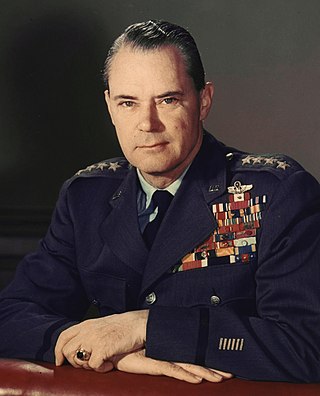
Hoyt Sanford Vandenberg was a United States Air Force general. He served as the second Chief of Staff of the Air Force, and the second Director of Central Intelligence.
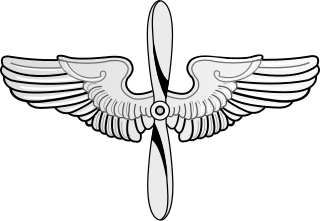
The United States Army Air Service (USAAS) was the aerial warfare service component of the United States Army between 1918 and 1926 and a forerunner of the United States Air Force. It was established as an independent but temporary branch of the U.S. War Department during World War I by two executive orders of President Woodrow Wilson: on May 24, 1918, replacing the Aviation Section, Signal Corps as the nation's air force; and March 19, 1919, establishing a military Director of Air Service to control all aviation activities. Its life was extended for another year in July 1919, during which time Congress passed the legislation necessary to make it a permanent establishment. The National Defense Act of 1920 assigned the Air Service the status of "combatant arm of the line" of the United States Army with a major general in command.

General Walter Bedell "Beetle" Smith was a senior officer of the United States Army who served as General Dwight D. Eisenhower's chief of staff at Allied Forces Headquarters (AFHQ) during the Tunisia Campaign and the Allied invasion of Italy in 1943, during World War II. He was Eisenhower's chief of staff at the Supreme Headquarters Allied Expeditionary Force (SHAEF) in the campaign in Western Europe from 1944 to 1945.
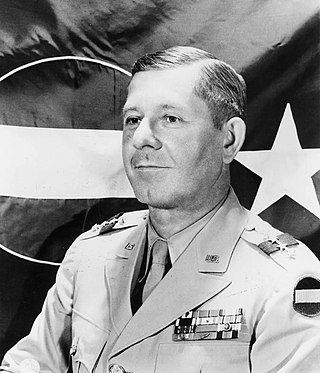
Jacob Loucks Devers was a general in the United States Army who commanded the 6th Army Group in the European Theater of World War II. He was involved in the development and adoption of numerous weapons, including the M4 Sherman and M26 Pershing tanks, the DUKW amphibious truck, the Bell H-13 Sioux helicopter, and the M16 rifle.

Lewis Hyde Brereton was a military aviation pioneer and lieutenant general in the United States Air Force. A 1911 graduate of the United States Naval Academy, he began his military career as a United States Army officer in the United States Army Coast Artillery Corps prior to World War I, then spent the remainder of his service as a career aviator.
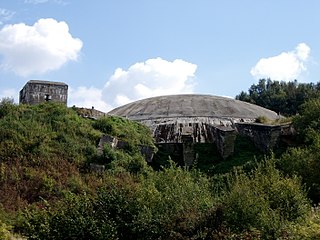
Crossbow was the code name in World War II for Anglo-American operations against the German long range reprisal weapons (V-weapons) programme. The primary V-weapons were the V-1 flying bomb and V-2 rocket, which were launched against Britain from 1944 to 1945 and used against continental European targets as well.
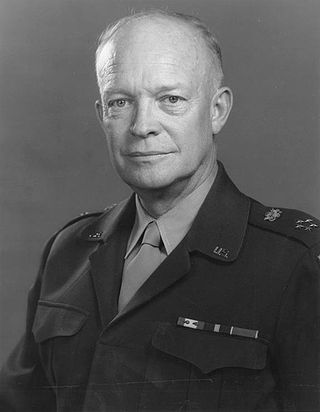
The military career of Dwight D. Eisenhower began in June 1911, when Eisenhower took the oath as a cadet at the United States Military Academy at West Point. He graduated from West Point and was commissioned as a second lieutenant in the United States Army in June 1915, as part of "the class the stars fell on". He rose through the ranks over the next thirty years and became one of the most important Allied generals of World War II, being promoted to General of the Army in 1944. Eisenhower retired from the military after winning the 1952 presidential election, though his rank as General of the Army was restored by an act of Congress in March 1961.

Air Chief Marshal Sir James Milne Robb, was a senior Royal Air Force commander. After early service in the First World War with the Northumberland Fusiliers, Robb joined the Royal Flying Corps and became a flying ace credited with seven aerial victories. He was granted a permanent commission in the Royal Air Force in 1919 and commanded No. 30 Squadron RAF in the Iraqi revolt against the British. In 1939, Robb travelled to Canada to help establish the Empire Air Training Scheme, a massive training program that provided the Royal Air Force with trained aircrew from Canada, Australia, New Zealand and Southern Rhodesia. He commanded No. 2 Group RAF of RAF Bomber Command and No. 15 Group RAF of RAF Coastal Command.
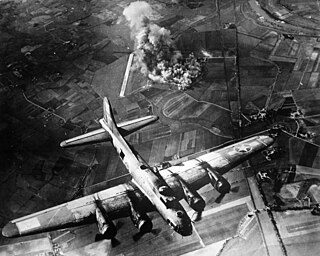
The Combined Bomber Offensive (CBO) was an Allied offensive of strategic bombing during World War II in Europe. The primary portion of the CBO was directed against Luftwaffe targets which was the highest priority from June 1943 to 1 April 1944. The subsequent highest priority campaigns were against V-weapon installations and petroleum, oil, and lubrication (POL) plants. Additional CBO targets included railyards and other transportation targets, particularly prior to the invasion of Normandy and, along with army equipment, in the final stages of the war in Europe.

General Wade Hampton Haislip was a senior United States Army officer who served in both World War I and World War II, where he led XV Corps on the Western Front from 1944 to 1945. He later became a four-star general, serving as Vice Chief of Staff of the United States Army (VCSA) from 1949 to 1951.

The United States Army Air Forces was the major land-based aerial warfare service component of the United States Army and de facto aerial warfare service branch of the United States during and immediately after World War II (1941–1947). It was created on 20 June 1941 as successor to the previous United States Army Air Corps and is the direct predecessor of the United States Air Force, today one of the six armed forces of the United States. The AAF was a component of the United States Army, which on 2 March 1942 was divided functionally by executive order into three autonomous forces: the Army Ground Forces, the United States Army Services of Supply, and the Army Air Forces. Each of these forces had a commanding general who reported directly to the Army Chief of Staff.
William Terry Badham was a World War I fighter ace credited with five victories. He was one of four Americans to earn the title of "Ace" as an observer/gunner during World War I.
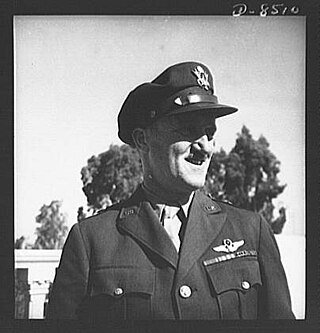
Major Victor Herbert Strahm began his career as a World War I flying ace credited with five aerial victories. In his 36-year career, he served as a chief test pilot for the United States Army Air Forces while en route to higher command.
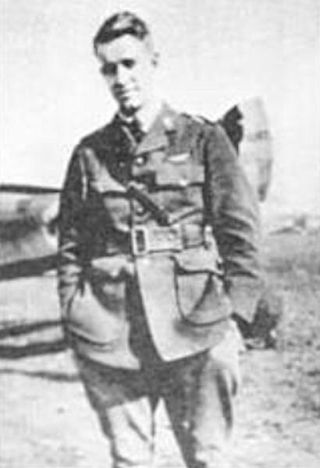
Edward Peck "Ted" Curtis was a World War I flying ace with six aerial victories. Between the world wars, he served as vice president of Eastman Kodak's international division. In World War II he served as the Chief of Staff, U. S. Strategic Air Force in Europe earning the rank of major general. As Special Assistant to President Eisenhower for Aviation Facilities Planning, he earned the 1957 Robert J. Collier Trophy.
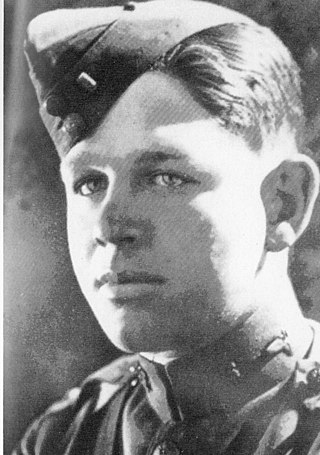
William Howard Stovall was a WW1 flying ace and distinguished cotton farmer, who also served in WW2. He began his military career as a World War I pilot credited with six aerial victories and achieving the rank of First Lieutenant. He went on to become a successful businessman before serving in World War II. On the latter occasion, he served once again with fellow aerial combat veterans from World War I, Frank O'Driscoll Hunter and Carl Spaatz, rising to colonel. He also suffered the loss of his namesake son in aerial battle.

Everett Strait Hughes was a major general in the United States Army and served as the 17th Chief of Ordnance for the U.S. Army Ordnance Corps. He is known for his close association with Dwight D. Eisenhower. Hughes was born in Ipswich, Dakota Territory, was a West Point graduate, and rose to become major general in the U.S. Army. He fought in a number of battles including the Mexican border war and World War I. During World War II he was one of George S. Patton's close friends and Eisenhower's "right-hand man" during the entire European campaign.



















